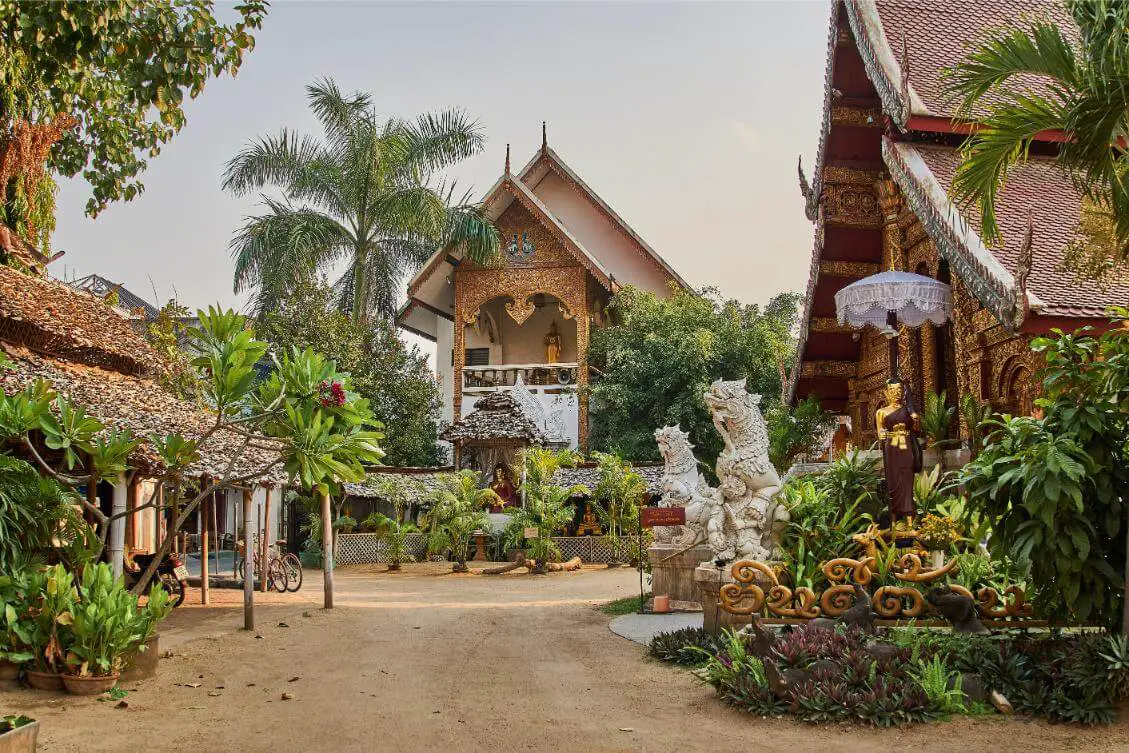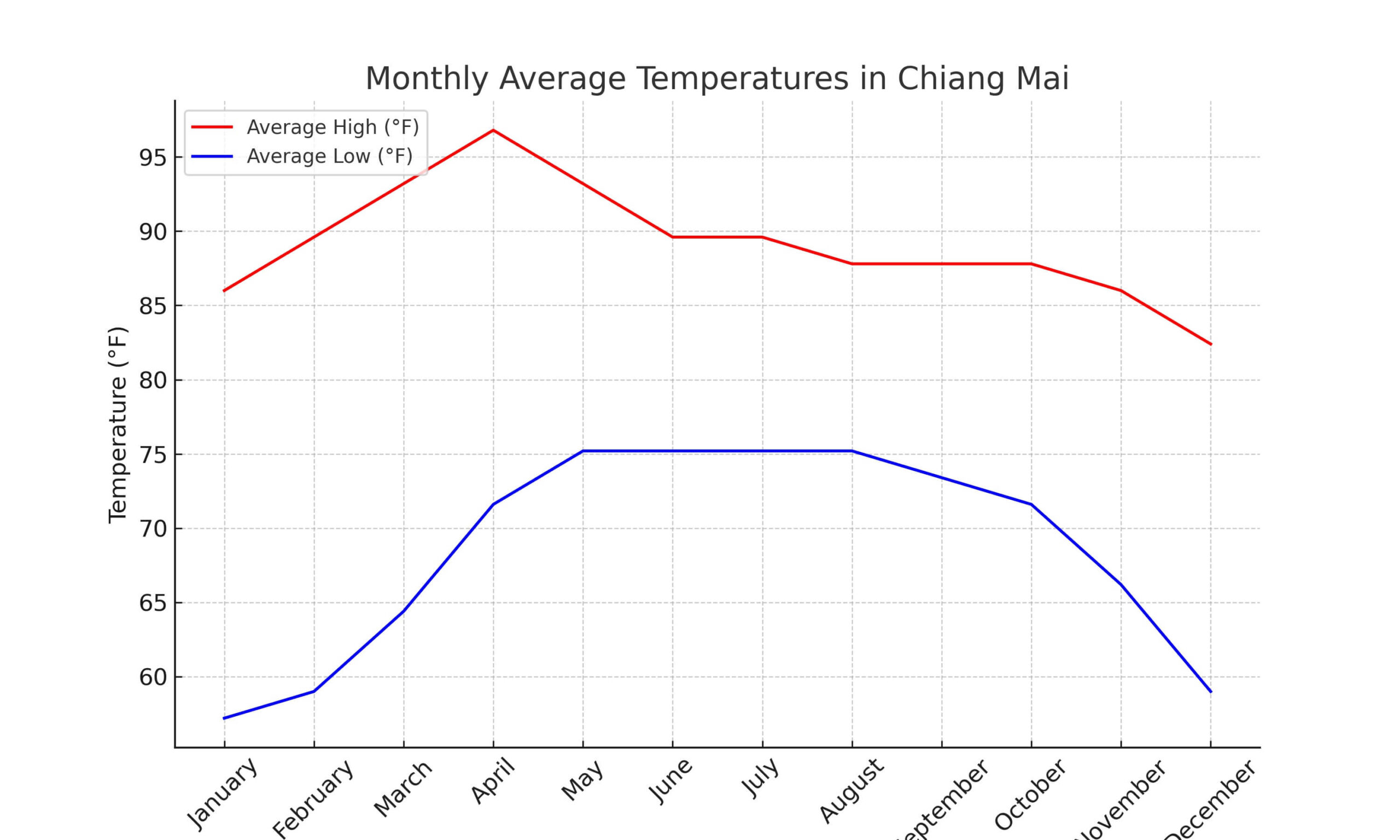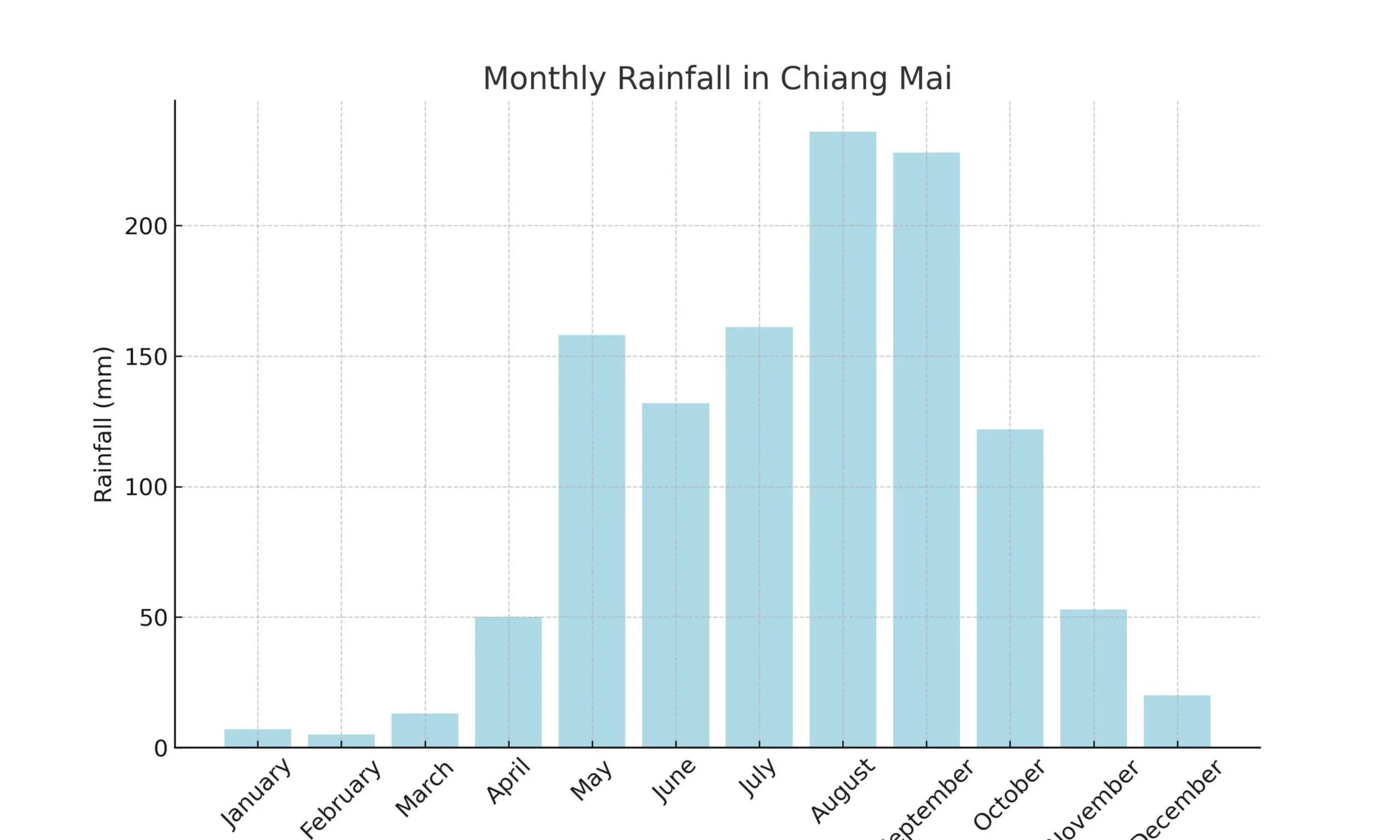Understanding Northern Thailand’s weather is crucial for planning a trip to Chiang Mai. The general climate is hot and humid, with a long monsoon season.
For ideal outdoor exploration, you can enjoy clear skies, pleasant temperatures, and vibrant festivals from November to February. This cool season reveals Chiang Mai’s charm, perfect for immersing yourself in its culture and natural beauty.
However, from May to October, sporadic showers mark the rainy season, with unpleasant muddy environments.
Whether you prefer the crisp, dry winter or the refreshing rain of the wet season, knowing Chiang Mai’s climatic patterns is essential for a seamless exploration of this remarkable destination.

When is the best time to visit Chiang Mai?
The best time to visit Chiang Mai is between November to February. During these months, Chiang Mai welcomes the perfect weather for all delightful outdoor experiences. This period marks the city’s cool season, attracting visitors with pleasant weather for outdoor exploration.
The temperatures remain comfortably cool, making it an ideal time for various outdoor activities.
While the climate doesn’t reach extreme cold levels, it’s advisable to pack a jacket and some lightweight woolens to stay cozy during your explorations.
This season allows you to enjoy the charm of Chiang Mai without the discomfort of excessive heat or chilly conditions, providing an excellent opportunity to immerse yourself in the region’s cultural and natural wonders.
November is particularly special with the Loi Krathong and Yi Peng lantern festivals, creating a magical atmosphere with lanterns illuminating the city.
Loi Krathong and Yi Peng occur during the night of the full moon in the 12th month of the traditional Thai lunar calendar, which is November in the Western calendar.


When is the worst time to visit Chiang Mai?
The worst time to visit Chiang Mai is March, primarily due to the onset of the burning season.
Aside from elevated temperatures, this period sees increased air pollution as farmers conduct field burning activities, contributing to the highest pollution levels in spring.
The northern region becomes dry and dusty, potentially increasing temperatures.
It is advisable to avoid visiting Chiang Mai from mid-February through early April due to these unfavorable conditions.
For those who prefer to steer clear of heavy rain, cold weather, muddy environments, flooded roads, and mosquitoes, June to October is less ideal.
Conversely, March to May may not suit individuals averse to high temperatures, excessive sweating, and potential skin damage.
The cheapest time to visit Chiang Mai
The most economical period to explore Chiang Mai is during the off-season, from July to October, marked by the rainy months.
This timeframe sees reduced tourist numbers, resulting in lower prices for accommodations and tours.
Travelers can capitalize on significant discounts for flights and lodging, making it the most budget-friendly time to organize a trip to Chiang Mai.
June and September, in particular, present more affordable accommodation choices.
Nevertheless, it’s essential to be ready for potential rain affecting your plans, with some attractions and outdoor activities possibly limited during this period.
Off-season: The least busy time to visit Chiang Mai
Explore Chiang Mai during its off-season from March to June, when the city enjoys sunny and dry weather.
The decrease in tourist numbers during these months offers a chance to experience a crowd-free environment and fully immerse yourself in the city’s charm.
The most expensive time to visit Chiang Mai
Chiang Mai experiences peak tourist seasons from January to December, with notable spikes during holidays and festivals such as The Bo Sang Umbrella Festival.
Accommodation and tour prices are higher during these periods due to increased demand. If you intend to visit during major events like Loi Krathong in November, expect elevated costs and a surge in tourist activity.
Hottest months in Chiang Mai
The hottest months of Chiang Mai’s heat occur from March to May, right before the onset of the rainy season.
Temperatures rise to 40°C, accompanied by an increase in humidity. Navigating the city during these months may be uncomfortable and less enjoyable for those sensitive to high temperatures.
If you prefer milder conditions, planning your visit outside this scorching period is advisable.
Coldest months in Chiang Mai
The coldest months in Chiang Mai span from November to February, with January typically being the chilliest.
Temperatures can drop to as low as 15°C (59°F), and in elevated areas like Doi Inthanon National Park, they may evenreach freezing levels at around 3°C (37.4°F).
If you plan to explore mountainous regions or higher elevations in Chiang Mai during this period, it’s wise to be prepared for cooler weather.
Month-by-month weather in Chiang Mai
A table showing the weather month-by-month
| Months | Average High (°C) | Average Low (°C) | Rainfall (mm) | Condition |
| January | 30 | 14 | 7 | Cool and dry |
| February | 32 | 15 | 5 | Dry and warming up |
| March | 34 | 18 | 13 | Warm with increasing humidity |
| April | 36 | 22 | 50 | Hot and dry |
| May | 34 | 24 | 158 | Hot with occasional showers |
| June | 32 | 24 | 132 | Start of the rainy season, warm and humid |
| July | 32 | 24 | 161 | Rainy season continues |
| August | 31 | 24 | 236 | Rainy season peaks |
| September | 31 | 23 | 228 | Continued rain, humidity starts to decrease |
| October | 31 | 22 | 122 | Decreasing rainfall, cooler temperatures |
| Novemer | 30 | 19 | 53 | Cool and dry, pleasant weather |
| December | 28 | 15 | 20 | Cool and dry, approaching winter season |
Frequently asked questions about Chiang Mai
What is special in Chiang Mai?
Chiang Mai’s popularity stems from its abundant cultural heritage, captivating landscapes, and inviting ambiance. The city is renowned for its ancient temples, lively markets, and a thriving arts scene.
How many seasons are there in Chiang Mai?
There are three seasons;
- March to May – Hot season
- June to October – Wet/Rainy season
- November to February – The best Cool-dry season
How many days do you need in Chiang Mai?
Spending four nights and five days will allow you ample time to explore and experience Chiang Mai’s authentic essence thoroughly.
However, experiences differ from one person to another, so if you wish to spend more time, you’re more than welcome.
You might want to check out the attraction sites of Bangkok or Phuket if possible.
What language do they speak in Chiang Mai?
The majority of residents converse in Thai, although there is a significant number of elderly individuals who are proficient in the distinctive language of the former Lan Na Kingdom, referred to as Northern Thai, Lanna, or Kham Mueang.
How long does typhoon season last in Thailand?
Typhoons are common in Thailand, particularly from June to December, with a heightened prevalence typically observed from September to November.
Is Chiang Mai better than Phuket?
Chiang Mai is ideal for those seeking an energetic adventure, whereas Phuket is better suited for a leisurely day by the beach. In terms of the city, there is no definitive good or bad choice.
Both locations offer beauty and opportunities to discover new traditions, cuisines, and attractions.
